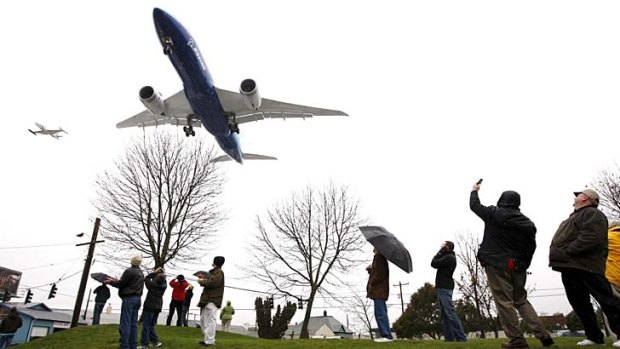This was published 9 years ago
Boeing 787 Dreamliner gets FFA clearance to fly further on over-water trips

The new rule gives airlines more flexibility to fly routes in the southern reaches of the Pacific, Atlantic and Indian oceans using Boeing 787 Dreamliners.Credit: Bloomberg
Boeing's 787 Dreamliner will be allowed to fly further from the nearest airport on some long over-water trips after US regulators concluded that the once- troubled jet has proved its reliability.
The clearance from the Federal Aviation Administration will let airlines put 787s on more-direct routes, cutting fuel burn. The FAA's decision means Dreamliners will be able to fly as far as 5 1/2 hours from an airport, the top duration for any plane, instead of the previous three hours.
"Our customers are eager to expand their 787 operations," Larry Loftis, Boeing's general manager for the Dreamliner program, said Wednesday in a statement. "We're delighted that this capability, which was designed into the airplane from the very beginning, has been certified."
The agency's move is a vote of confidence for the world's first jetliner built chiefly of composite plastics, a plane that was grounded last year to fix battery meltdowns and whose delays during development meant that its 2011 debut ran more than three years late. Aviation regulators in other nations typically follow the FAA's lead.
While the twin-engine 787 has been used on oft-travelled long-range routes like those across the northern Pacific, the new rule gives airlines more flexibility to fly routes in the southern reaches of the Pacific, Atlantic and Indian oceans, and over the North and South poles. The new -9 version of the 787 has a maximum range of 8300 nautical miles (15,370 kilometers), or farther than Boeing's newest four-engine 747.
Special regulations for so-called extended operations are designed to ensure that commercial aircraft in the world's most- remote airspace can safely divert to an alternate airport in the event of an engine failure or fire, according to the FAA.
In the early days of commercial flight, twin-engine jets weren't allowed to fly more than 60 minutes from an airport because they weren't deemed dependable enough. Regulators have gradually increased the time allowed from a diversion spot amid improvements in engines and other safety enhancements.
Dreamliner buyers can choose engines made by General Electric or Rolls Royce Holdings, and both can qualify for the extended flight routes under the FAA's new policy.
Boeing's Dreamliner deliveries totalled 146 to 19 customers, according to the company. As of May 19, the global 787 fleet's tally was 97,520 commercial flights, with an estimated 18.3 million passengers.
The cases for the 787's lithium-ion batteries were redesigned last year after units in two planes overheated and, in one case, caught fire. The Dreamliner is the most-advanced model from Chicago-based Boeing, with features including an increased reliance on electricity to power the plane's systems.
The New York Times
Sign up for the Traveller Deals newsletter
Get exclusive travel deals delivered straight to your inbox. Sign up now.